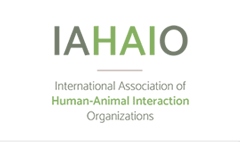Abstract
Animal hoarding is a severe problem in the field of human-animal interaction. The goal of this study was to assess the current situation of animal hoarding in Germany. Reports of animal hoarding cases were collected from animal shelters and public media between January 2012 and December 2015; 120 cases were analyzed. A total of 9,174 animals were hoarded during the investigated time period. The results showed that cases involving cats were most common, followed by cases involving dogs and small mammals. The average number (x¯) of animals hoarded per case was 76 (x˜ = 43). Small mammals were hoarded in greater numbers than any other type of animal (x¯ = 88, x˜ = 53, Tukey’s HSD, p < 0.05). Most hoarders in this study were middle-aged females. Animal hoarding is a current and serious animal welfare problem for which a stronger interdisciplinary approach is needed. Responsible institutions such as veterinary, legal, and health departments need to improve cooperation and provide continuous help for hoarders and animals. Psychological and practical help for repeat offenders, but also for potential hoarders, could improve the situation sustainably. The German Animal Welfare Association (Deutscher Tierschutzbund e.V.) is an umbrella organization of more than 550 animal shelters in Germany. It provides financial and practical help in animal hoarding cases. This study follows up Sperlin´s veterinary dissertation (2012) and gives an overview of animal hoarding cases in Germany.
Recommended Citation
Arnold, Sophie; Mackensen, Henriette; Ofensberger, Evelyn; and Rusche, Brigitte
(2018)
"Assessment of Recent Cases of Animal Hoarding in Germany: The Challenge for Animal Shelters and Public Authorities,"
People and Animals: The International Journal of Research and Practice: Vol. 1
:
Iss.
1,
Article 7.
Available at:
https://docs.lib.purdue.edu/paij/vol1/iss1/7


